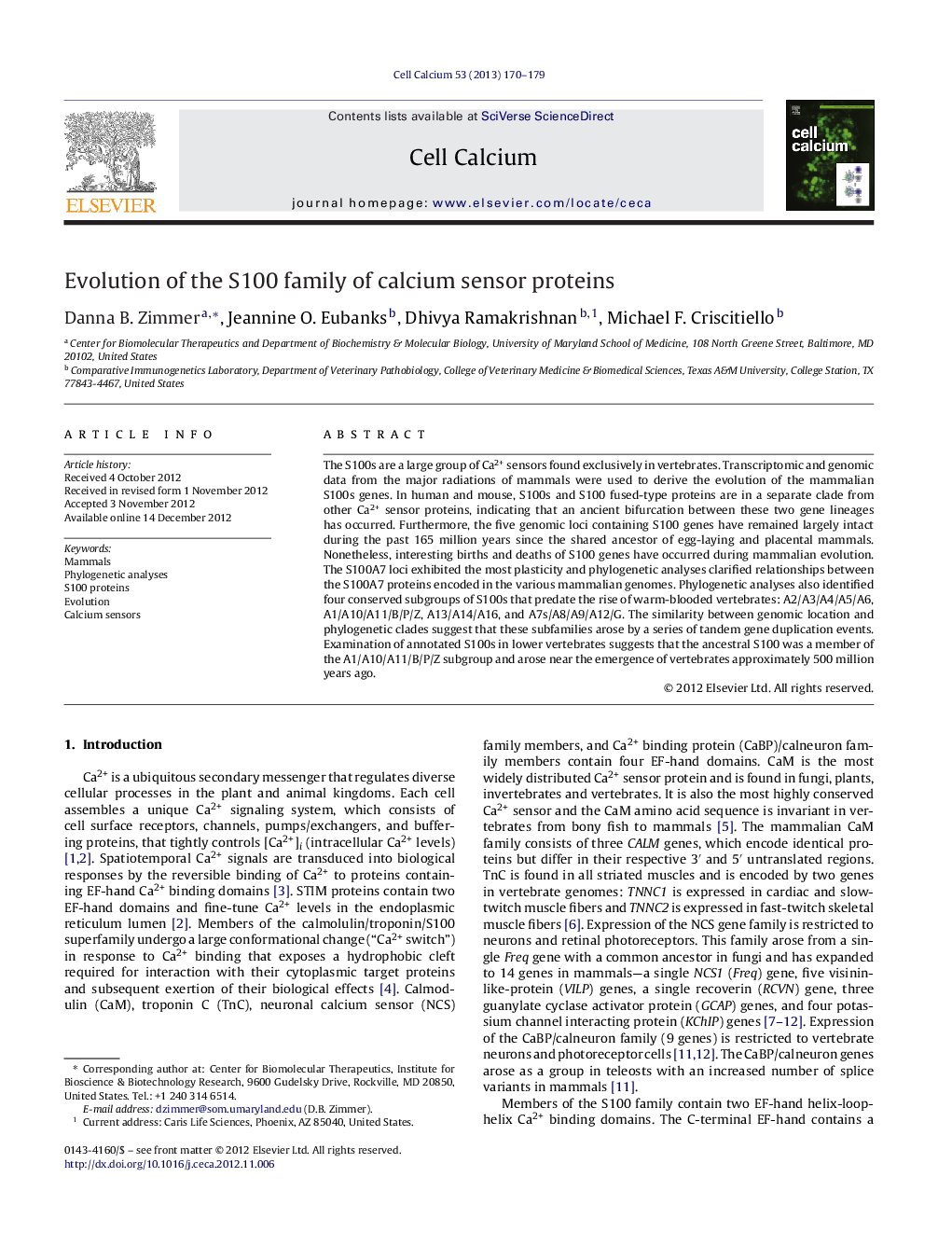| کد مقاله | کد نشریه | سال انتشار | مقاله انگلیسی | نسخه تمام متن |
|---|---|---|---|---|
| 2165964 | 1091797 | 2013 | 10 صفحه PDF | دانلود رایگان |
عنوان انگلیسی مقاله ISI
Evolution of the S100 family of calcium sensor proteins
دانلود مقاله + سفارش ترجمه
دانلود مقاله ISI انگلیسی
رایگان برای ایرانیان
کلمات کلیدی
موضوعات مرتبط
علوم زیستی و بیوفناوری
بیوشیمی، ژنتیک و زیست شناسی مولکولی
بیولوژی سلول
پیش نمایش صفحه اول مقاله

چکیده انگلیسی
The S100s are a large group of Ca2+ sensors found exclusively in vertebrates. Transcriptomic and genomic data from the major radiations of mammals were used to derive the evolution of the mammalian S100s genes. In human and mouse, S100s and S100 fused-type proteins are in a separate clade from other Ca2+ sensor proteins, indicating that an ancient bifurcation between these two gene lineages has occurred. Furthermore, the five genomic loci containing S100 genes have remained largely intact during the past 165 million years since the shared ancestor of egg-laying and placental mammals. Nonetheless, interesting births and deaths of S100 genes have occurred during mammalian evolution. The S100A7 loci exhibited the most plasticity and phylogenetic analyses clarified relationships between the S100A7 proteins encoded in the various mammalian genomes. Phylogenetic analyses also identified four conserved subgroups of S100s that predate the rise of warm-blooded vertebrates: A2/A3/A4/A5/A6, A1/A10/A11/B/P/Z, A13/A14/A16, and A7s/A8/A9/A12/G. The similarity between genomic location and phylogenetic clades suggest that these subfamilies arose by a series of tandem gene duplication events. Examination of annotated S100s in lower vertebrates suggests that the ancestral S100 was a member of the A1/A10/A11/B/P/Z subgroup and arose near the emergence of vertebrates approximately 500 million years ago.
ناشر
Database: Elsevier - ScienceDirect (ساینس دایرکت)
Journal: Cell Calcium - Volume 53, Issue 3, March 2013, Pages 170-179
Journal: Cell Calcium - Volume 53, Issue 3, March 2013, Pages 170-179
نویسندگان
Danna B. Zimmer, Jeannine O. Eubanks, Dhivya Ramakrishnan, Michael F. Criscitiello,